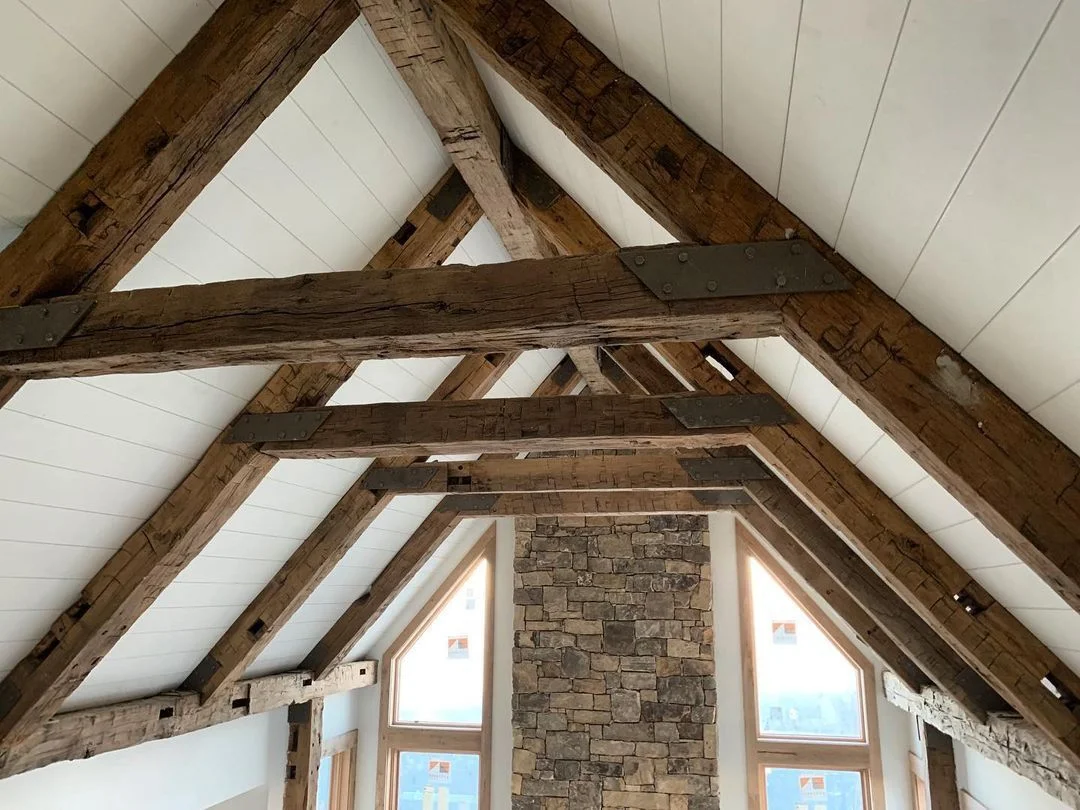Building a house involves numerous decisions, and one key aspect that often goes unnoticed is the selection and installation of floor joists. These horizontal structural elements play a vital role in supporting the weight of the above structure, ensuring a level and stable foundation. In this article, we’ll delve into the world of floor joists, exploring their types, installation tips, and the perfect spacing that guarantees a robust foundation.
What Are Floor Joists?
Before delving into the intricacies, let us establish the fundamental concept of floor joists. Floor joists are essential structural components that play a crucial role in providing robust support for the floors within a building. These horizontal beams are specifically designed to bear the weight and distribute the load evenly, ensuring the stability and integrity of the entire structure.

Types of Floor Joists
Not all joists are created equal, and understanding the different types is essential for making informed decisions during the construction process.
Solid Lumber Joists
The predominant and cost-effective variety of joists, solid lumber joists, are crafted from mature trees, making them a prevalent choice in construction. The choice of wood species plays a crucial role in determining the size of the boards and consequently imposes limitations on span distances. Caution is advised in this regard, as the utilization of younger trees in this joist system may lead to the undesired outcome of warped boards.
I-Joists
I-joists, also known as engineered I-beams, represent a prevalent choice in modern construction. The distinctive “I” shape is a key feature contributing to their structural efficiency. These joists are designed with a meticulous focus on achieving an excellent strength-to-weight ratio. This characteristic makes I-joists particularly well-suited for applications involving extended spans and substantial loads. Their widespread adoption in construction projects underscores their reputation for combining durability and performance in meeting engineering requirements.

Open Web Trusses
Open web trusses are a lightweight choice in construction. They consist of a framework made up of small diagonal and horizontal members. While not as common as other types, they are preferred for certain uses, especially in industrial and commercial settings. Open web trusses are designed to balance structural strength and weight efficiency, making them a good fit for projects where reducing the load on the structure is important without sacrificing strength. They are commonly used in industrial and commercial construction, where flexibility and efficiency are key factors.
Factors Influencing Floor Joist Selection
Selecting the right joists involves considering several factors, each of which plays a crucial role in the overall stability and durability of the structure.
Span Requirements
The span of a floor joist, indicating the distance it covers, significantly dictates the type of joist required. Longer spans demand stronger and more robust joists to effectively support the load. This places a crucial role on aligning joist selection with specific span requirements properly for optimal structural integrity.
Load-Bearing Capacity
Understanding the load-bearing capacity of different floor joists is essential for preventing structural issues. Be sure to account for both dead loads (permanent elements like the structure itself) and live loads (temporary elements like furniture and occupants).
Budget Considerations
Navigating budget constraints is a constant reality in construction. Striking a balance between the need for quality joists and financial realities5 is a delicate yet necessary task. It involves carefully evaluating available resources against desired standards, ensuring cost-effectiveness without compromising structural integrity.
Common Problems with Floor Joists
Sagging and Warping
Over time, floor joists may sag or warp due to various factors. To prevent these issues, proper installation and regular maintenance is crucial. Precision during installation and consistent inspections can help maintain the structural integrity of the flooring system.
Moisture-Related Issues
Moisture exposure can lead to rot and decay in wooden joists. To prevent this, ensure adequate ventilation and install moisture barriers. Proper ventilation allows for efficient air circulation which reduces moisture accumulation, while moisture barriers act as a protective shield against moisture infiltration, preserving the structural integrity of the wooden joists.
Addressing and Preventing Problems
Ensuring the prolonged lifespan of joists involves regular inspections, timely repairs, and preventive measures like proper ventilation and sealing. Regular inspections detect issues early, while prompt repairs prevent escalation. Strategic preventative measures, including optimal ventilation and sealing, collectively contribute to the durability of floor joists.
Innovations in Floor Joist Technology
Advancements in Materials
Explore enhanced performance in construction with new materials like composite joists, which offer superior strength and durability compared to traditional options. These innovations present a compelling choice for those seeking a balance between reliability and technological progress in construction projects.

Smart Technology Integration
In recent advancements, certain joists are now designed with integrated smart technology, enabling real-time monitoring of their structural integrity. This means that these joists are equipped with sensors or monitoring devices that provide instant feedback on the conditions and stresses the joists are experiencing. By considering these options, individuals involved in construction projects can gain added peace of mind through continuous, data-driven insights into the condition and performance of the floor joists. This proactive monitoring allows for early detection of potential issues, contributing to better maintenance practices and potentially preventing more severe problems.
Environmental Considerations
Materials such as reclaimed wood or bamboo present eco-friendly alternatives to conventional joist materials. Reclaimed wood involves repurposing previously used lumber, reducing the demand for new timber, and minimizing waste. Bamboo, known for its rapid growth and renewability, offers a sustainable option with a lower environmental impact compared to traditional hardwoods. Opting for sustainable alternatives aligns with responsible construction practices, contributing to the conservation of natural resources and mitigating the ecological footprint associated with building projects
Understanding Floor Joist Spacing
Floor joist spacing plays a pivotal role in the selection of flooring materials and the overall stability of a structure. Adhering to industry standards and guidelines is essential, as they provide specific recommendations considering factors such as the type of joist, load-bearing requirements, and compliance with local building codes. The impact of proper joist spacing is directly reflected in the performance of flooring materials. Inadequate spacing has the potential to result in uneven floors, compromising the stability of the entire structure. Therefore, meticulous attention to the prescribed standards for floor joist spacing is crucial for ensuring not only the integrity of the flooring but also the stability and safety of the overall construction.

In conclusion, mastering floor joists is key to placing a robust foundation. Choose wisely, address issues promptly, and embrace innovations for durability. Consider factors like span requirements and load-bearing capacity. Opt for sustainable materials and smart technology. Ensure proper joist spacing for stable construction. Make informed choices for longevity and eco-friendliness. Ready to build with confidence? Consult construction professionals for guidance. Take the next step—choose the right floor joists for a strong and sustainable foundation!






